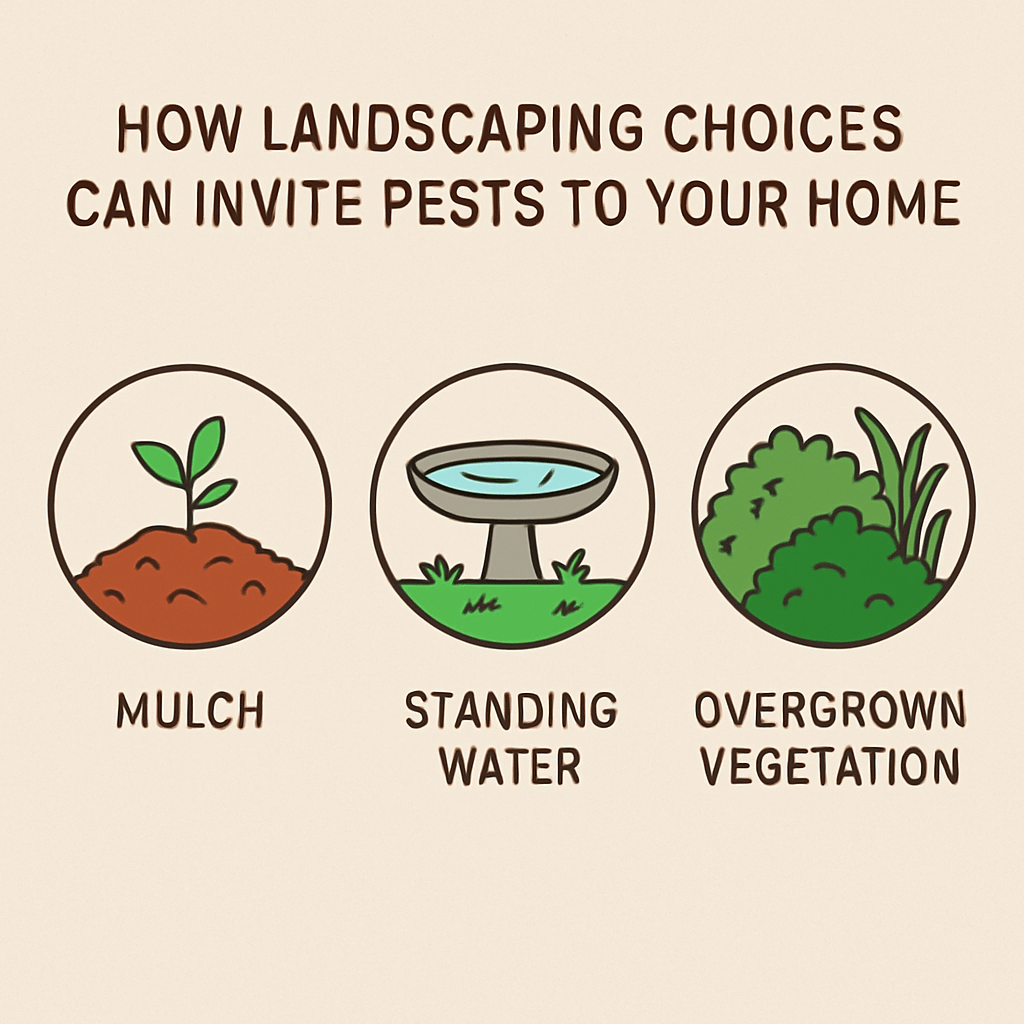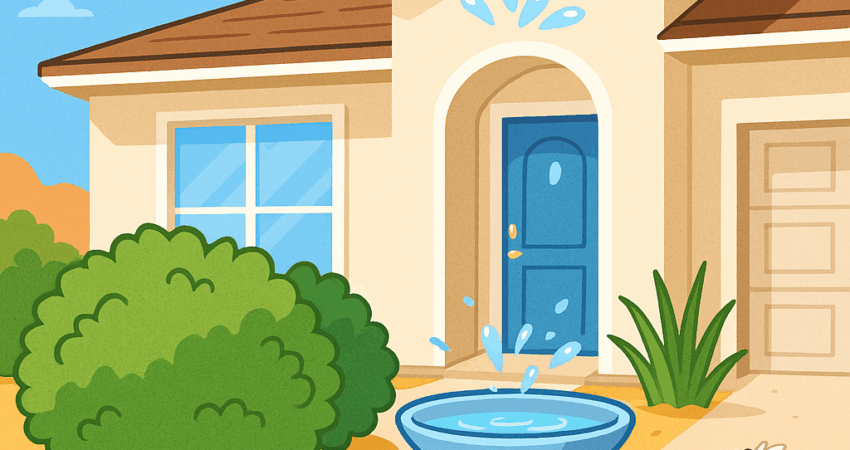When it comes to curb appeal, landscaping can do wonders for your Phoenix home. But what many homeowners don’t realize is how their landscaping choices can unknowingly invite pests right up to the doorstep. Whether it’s mulch, standing water, or overgrown vegetation, your yard might be creating the perfect environment for unwanted critters.

At T J Pest Control LLC, we’ve seen it all—from rodent tunnels under flower beds to mosquito infestations caused by poorly draining pots. In this blog, we’ll cover how to make smarter landscaping decisions that look great and keep pests away.
The Hidden Problem with Mulch
Mulch is a common landscaping feature in Arizona. It keeps the soil moist and gives yards a polished look. But mulch can also be a pest magnet if used improperly.
Thick mulch beds trap moisture underneath. Even in Phoenix’s dry climate, that layer stays damp. This creates a perfect habitat for ants, cockroaches, termites, and earwigs. These pests love the cool, shaded, and moist space mulch offers, right next to your foundation.
Rodents, especially mice, may burrow beneath mulch to create nests. Once they’re that close to your home, it’s only a matter of time before they look for ways inside.
What You Can Do:
- Keep mulch layers thin—2 to 3 inches at most.
- Avoid piling mulch directly against your home’s foundation.
- Use gravel or rock mulch close to the house to reduce pest attraction.
Standing Water: A Breeding Ground for Trouble
Phoenix may not be known for heavy rainfall, but irrigation systems, leaky hoses, and clogged gutters often lead to standing water. That’s bad news when it comes to pests.
Mosquitoes are the biggest concern. They lay eggs in even the smallest puddle of water. Flower pots, birdbaths, and poorly drained areas can become breeding zones. Mosquitoes don’t just bite—they can spread serious illnesses like West Nile Virus.
But mosquitoes aren’t the only problem. Standing water can also attract ants, roaches, and even roof rats looking for a reliable water source in the desert heat.
What You Can Do:
- Check your yard weekly for standing water after irrigation.
- Empty water from containers like planters, wheelbarrows, and toys.
- Ensure your sprinkler system isn’t over-saturating certain areas.
- Clean gutters regularly so water doesn’t pool along your roofline.
Overgrown Vegetation: Highway for Pests
Overgrown shrubs, trees, and vines create shade, cover, and hiding spots for pests. In Phoenix, overwatering vegetation makes this problem even worse.
Bushes and tree limbs that touch your house act like bridges for insects and rodents. Roof rats, in particular, are common in the Valley and can use tree limbs to get onto your roof. From there, it’s easy access into your attic or vents.
Tall grass and thick plant beds also attract pests like ticks, spiders, and scorpions. These critters prefer cool, damp spots to hide during the hot Arizona days.
What You Can Do:
- Trim trees and shrubs away from your home’s structure.
- Avoid letting vegetation touch siding, eaves, or windows.
- Mow your lawn regularly and keep weeds under control.
- Keep palm trees and cacti trimmed to avoid bird and rodent nests.
Decorative Features That Can Backfire
Fire pits, decorative rocks, and outdoor furniture can all become pest-friendly if not maintained. Firewood piles attract termites. Rocks give scorpions places to hide. Cushions can harbor spiders and ants.
Even your outdoor lighting might be attracting bugs. Bright white lights bring insects in droves, which can then bring predators like bats and lizards.
What You Can Do:
- Store firewood 20 feet from your home and off the ground.
- Shake out furniture cushions and store them in sealed containers.
- Replace white bulbs with yellow “bug lights” to reduce insect attraction.
Compost and Trash: The Ultimate Invite
If you compost, that’s great for the environment, but it’s also appealing to pests if done wrong. Organic materials, especially fruits and vegetables, attract flies, ants, and rodents.
Likewise, uncovered trash cans and overflowing yard waste bins provide food and shelter to pests. The dry heat of Phoenix may slow down decomposition, but it won’t stop the smell from attracting critters.
What You Can Do to Prevent Pests:
- Use a sealed compost bin with a tight-fitting lid.
- Keep trash in closed containers and out of direct sunlight.
- Rinse bins regularly and don’t let debris accumulate nearby.
Why This Matters for Phoenix Homeowners
Phoenix presents unique pest challenges because of its heat and desert landscape. Many pests, such as roof rats, scorpions, and cockroaches, thrive in dry climates and are excellent at finding shelter in shaded, damp places created by landscaping.
Keeping your yard pest-free isn’t about having less—it’s about being smart. Well-planned landscaping can still be lush and beautiful while making pests feel unwelcome.
Final Thoughts
Your landscaping choices play a big role in determining whether pests will stay outside or come inside.
By managing mulch, eliminating standing water, and trimming vegetation, you’ll drastically reduce your risk of infestation. At T J Pest Control LLC, we know exactly what to look for and how to stop pests before they become a serious problem.
Need Help Keeping Pests Out of Your Yard?
Let the local experts at T J Pest Control LLC help you defend your home. Our Phoenix-based team specializes in residential pest inspections and customized prevention plans tailored to Arizona landscapes.
Because peace of mind should start right in your backyard.

